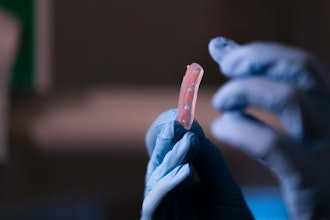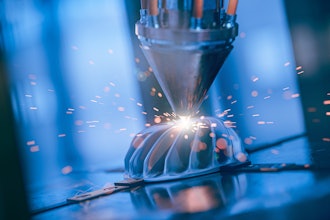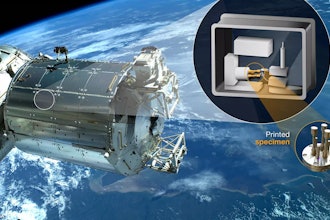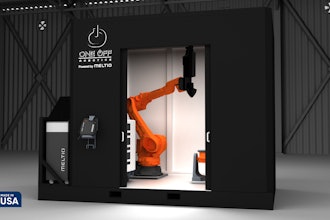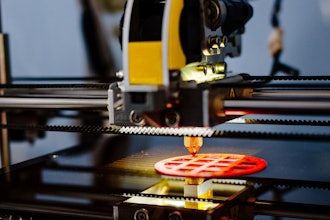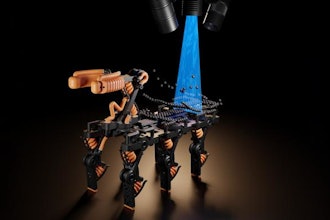
In February, President Biden signed an executive order on America's supply chains to enhance the resilience and reliability of America's critical supply chains. The Biden Administration is putting an emphasis on ensuring manufacturing has a seat at the table in the White House and remains an integral part in advancing American competitiveness at a global scale, focusing on benefits to national security and economic interests.
These concrete actions signal that now is advanced manufacturing's moment in the national conversation. By strengthening the additive manufacturing industry, the government can focus on supply chain readiness, ensuring that a crisis like the current pandemic won't happen again to the degree that it has. With practical legislation and policy moves that allow additive and advanced manufacturing to be a solution for America's supply chains, we can ensure we're never caught flat-footed in the face of crisis.
But the reality is that additive manufacturing is relatively new with the government. It's easy for government leaders to say no to these solutions when they haven't seen them in place. Thanks to recent developments like the renewed manufacturing push in the administration and the recent DoD Additive Manufacturing Strategy, we can capitalize on the momentum and make additive manufacturing a reality government–wide.
The Biden Administration’s strategy also includes the recently announced Build Back Better Recovery Plan, which invests in American workers, unions and businesses up and down the supply chain to revitalize American manufacturing and secure a "Made in America" future. Additive manufacturing has emerged as an integral part of modern manufacturing because of its unique, rapid manufacturing capabilities in various sectors. Underscoring this emerging technology's importance, the Defense Department released its first-ever Additive Manufacturing Strategy to set national standards for digital manufacturing products and processes.
Additive manufacturing has gradually become a pillar of the new digital economy, allowing for accelerated development of products to modernize manufacturing procurement, the supply chain, and the sustainability of manufacturing. As new legislation and executive action surrounding additive manufacturing increase, we can build upon recent successes to highlight its role in supporting our country.
Additive's Role in Advancing America
Additive manufacturing has been a critical resource to help solve many of the problems inflicted on the country during the pandemic. In times of crisis, like COVID–19, the additive community responded. The pandemic created a perfect storm for additive manufacturing capabilities to help as non-traditional manufacturers worked to address shortages and gaps in medical supplies, yielding millions of pieces of PPE—including face shields, masks and other medical accessories.
Building off this latest success, the government and this new administration need to continue to take further action, so we're ready for any challenge, whether the issue is related to defense, medical or transportation issues. For example, elevating the White House Office of Science and Technology Policy (OSTP) to a Cabinet-level agency means that advanced manufacturing will receive greater exposure and buy-in within the executive branch.
The administration's critical executive action to secure and strengthen supply chains is vital to America's continued progress. And the new tone underscores the crucial role America's advanced manufacturing community has played in closing supply chain gaps during the pandemic.
But the government can't go at this alone. Public–private partnerships (PPP) are invaluable to advancing additive manufacturing and achieving bolder goals. Government can leverage the existing innovation ecosystem, which supports U.S. technological competitiveness on a grand scale. We don't need to create something new when we can leverage institutions and organizations that already exist. Government agency leaders can focus on collaboration, using established R&D centers, and bringing together academia and industry.
When members from industry, academia, government, workforce and economic development organizations collaborate to accelerate the adoption of additive manufacturing, we can enable new solutions to advance U.S. manufacturing competitiveness and meet the critical needs of the American economy, especially in times of crisis.
We need to keep up the momentum for advanced manufacturing that we've built over the last few years and with the new administration. America is again poised to regain its status as the global leader in manufacturing through innovation and acceleration of additive manufacturing. We must continue to stimulate action, focus on collaboration and partnerships, and not re-invent the wheel.
As the nation's leading and collaborative partner in additive manufacturing technology and workforce development, we look forward to remaining an active participant in the future of manufacturing within this administration and beyond.
John Wilczynski is the Executive Director of America Makes.










